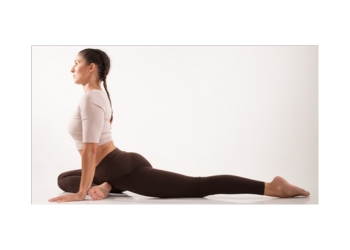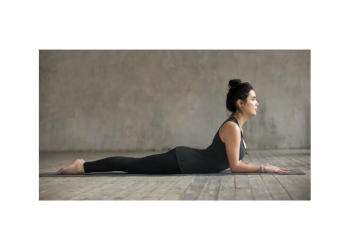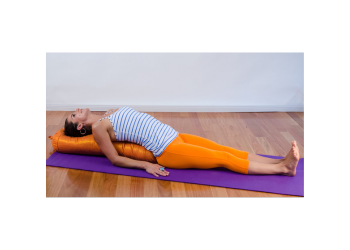Safety Series - Yin Yoga: A Practice of Stillness, Healing, and Nervous System Nourishment
In our fast-paced, achievement-oriented culture, the art of slowing down is often overlooked, and yet this very act of slowing is precisely what many of us need most—especially when navigating the challenges of healing from chronic illness or the complexities of a cancer journey. Yin Yoga is a profound tool for cultivating this gentle stillness, deeply nourishing both body and mind, and teaching the nervous system that it is finally safe enough to rest, repair, and heal.
Yin Yoga is often described as the quiet counterpart to the more vigorous and dynamic styles of yoga such as Vinyasa or Ashtanga. Unlike these active ("Yang") forms of yoga, Yin Yoga emphasises longer-held, passive postures designed to gently stretch and strengthen the body's deeper connective tissues—ligaments, tendons, and fascia.
Originating from a synthesis of ancient Taoist practices and traditional Hatha yoga, Yin Yoga was popularised in the West by teachers such as Paulie Zink, Paul Grilley, and Sarah Powers. Inspired by Chinese medicine philosophy, Yin Yoga views health as a dynamic interplay between complementary opposites—Yin and Yang. In modern terms, Yang practices energise and activate the body, while Yin practices deeply soothe, restore, and nourish. Both are essential for holistic wellbeing, yet Yin is often missing from our everyday routines.
In Yin Yoga, the physical practice itself is simple, but the internal journey is rich and profound. The essence of Yin Yoga lies not in effort, striving, or achieving—but in surrender, awareness, and compassion. Each Yin pose is held typically for three to five minutes (and occasionally longer), allowing the body and nervous system to settle into profound states of relaxation and receptivity.
Yin Yoga invites a meditative quality, encouraging practitioners to observe sensations without judgment or resistance. By cultivating mindful acceptance, Yin Yoga helps regulate the nervous system, gently retraining it from chronic fight-or-flight responses towards safety and calm.
Our nervous systems hold the memory of chronic stress, trauma, and unresolved emotional experiences, and these patterns often manifest physically in tense muscles, rigid joints, shallow breathing, and anxious minds. Yin Yoga, with its deliberate and compassionate approach, helps interrupt these survival responses. The gentle compression and elongation of tissues during Yin postures stimulate the parasympathetic nervous system—the body's healing response.
Regular Yin Yoga practice has been shown to decrease cortisol (stress hormone) levels, improve heart-rate variability, and encourage emotional and psychological resilience. By regularly engaging in Yin Yoga, we communicate directly to the nervous system that it is safe to let go of chronic tension, inviting a profound sense of internal peace and wellbeing.
The Family of Yin Yoga Asanas
Yin Yoga poses are divided into broad categories based on their anatomical targets and effects. The primary groups include:
Forward Bends (e.g., Caterpillar, Butterfly)
Nourish the spine, kidneys, and urinary bladder channels.
Help the nervous system move into deeper relaxation.
Caterpillar
From a seated position, extend your legs straight in front of you, keeping them relaxed and slightly apart. Let your spine gently round as you fold forward over your legs, allowing the weight of your head and arms to melt toward the floor. Use a bolster or pillow under your chest if you need support. This pose targets the spine, hamstrings, and fascia along the back body.
Butterfly
Sit with the soles of your feet together and let your knees gently fall out to the sides, forming a diamond shape with your legs. Slide your feet forward slightly to create space in the groin. Allow your spine to round as you fold forward over your legs, resting your arms or head on a bolster or block if needed. Breathe into the inner thighs and lower back.
Hip Openers (e.g., Swan, Sleeping Swan, Shoelace)
Release tension stored in the hips and emotional body.
Promote deep relaxation of the pelvic area.
Swan
From all fours, bring your right knee forward behind your right wrist and extend your left leg straight back. Square your hips as much as possible. Prop up your chest with your hands or lower into a forward fold over a bolster. Swan works deeply into the hips, glutes, and piriformis. Repeat on the other side.
Shoelace
Begin seated, cross your right knee over your left so both knees stack in the centre and your feet rest beside your hips. Sit tall or fold forward slowly, letting gravity deepen the hip stretch. Use a cushion or block under your hips if needed. Shoelace opens the outer hips, glutes, and lower back. Switch sides after a few minutes.
Twists (e.g., Reclining Twist, Twisted Roots)
Gently massage internal organs, detoxify, and rejuvenate.
Encourage healthy spinal rotation and release tension.
Reclining Twist
Lie on your back, draw your knees into your chest, then drop them slowly to one side while turning your head to the opposite side. Extend your arms out in a T-shape or cactus arms. Breathe deeply into the ribcage and belly. This pose gently wrings out the spine and massages the abdominal organs.
Twisted Roots
From lying on your back, cross your right leg over your left as if sitting in a chair. Then allow both legs to fall to the left while keeping the shoulders grounded. Your legs may wrap or simply rest stacked. Turn your head to the right for a deeper twist. Repeat on the other side. This variation brings more intensity to the spinal and sacral twist.
Backbends (e.g., Sphinx, Supported Fish)
Open the chest and heart area, gently stimulating energy flow.
Counteract the hunched posture often caused by stress and anxiety.
Sphinx
Lie on your belly and prop yourself up on your forearms, elbows under shoulders. Keep your legs relaxed and slightly apart. Allow the belly to drop and the chest to open as you breathe into the lumbar spine. This gentle backbend nourishes the kidneys and stimulates the spine’s natural curves.
Supported Fish
Place a bolster lengthwise under your spine (or a rolled blanket) so your chest opens and your head is supported. Let your legs rest long or bring the soles of your feet together (like butterfly pose) to open the hips. Rest your arms out to the sides, palms facing up. This heart-opening pose stimulates the thymus and invites deep relaxation.
A 60-Minute Yin Yoga Practice for Deep Restoration
Here is a gentle yet nourishing Yin Yoga sequence that you can easily practice at home or in your quiet space:
Opening Meditation (5 mins): Sitting comfortably, gently breathe, noticing sensations without judgment.
Butterfly Pose (5 mins): Gently open the hips and lower back.
Caterpillar (5 mins): A gentle forward bend nourishing the spine and calming the mind.
Sphinx (5 mins): Softly open the heart and chest, improving respiratory function.
Sleeping Swan (Pigeon) - Right side (5 mins): Deeply relaxes and releases hip tension.
Sleeping Swan (Pigeon) - Left side (5 mins): Balance by repeating on opposite side.
Reclining Twist (Right side, then Left side, 5 mins each): Calmly releases spinal tension, nourishing internal organs.
Supported Fish (5 mins): Gently opens the heart, lungs, and throat—soothing nervous tension.
Savasana (Final Relaxation, 10 mins): Lie comfortably on your back, integrating all the benefits of your practice.
While Yin Yoga is accessible to everyone, working directly with a skilled instructor can deeply enrich your experience and ensure you’re gently supported in your healing journey. Through personalised coaching, I provide tailored Yin Yoga sequences and compassionate guidance designed specifically for your unique physical and emotional needs. Together, we gently teach your nervous system to feel safe again, fostering deep and lasting healing.
Additionally, joining group Yin Yoga experiences, like my upcoming Yin & Tea event on July 9th, creates community and collective nourishment. In this intimate, ceremonial-style gathering, we blend Yin Yoga, mindful meditation, breathwork, and tea ceremony—helping you deeply connect with yourself and others, strengthening the body’s healing pathways in a supportive, nurturing environment.
Join the Yin & Tea Event on July 9th
Yin Yoga offers more than just physical relaxation; it is an invitation into deeper self-compassion, mindfulness, and healing. It gently reminds your body that it’s safe to rest, safe to slow down, and safe to heal. When practiced consistently, Yin Yoga helps transform the nervous system's chronic patterns of stress and tension into sustained states of calm and resilience.
As part of your healing journey, Yin Yoga is not simply a practice—it is an embodiment of kindness toward yourself. If you’re ready to explore deeper states of calm, safety, and healing, I invite you to experience Yin Yoga’s profound gifts firsthand.
To book personalised coaching or learn more about upcoming events, please connect with me directly through my website.
Explore Personal Yin Yoga Coaching with Eddie
Your body and nervous system already hold the wisdom needed to heal. Yin Yoga simply creates the conditions for this innate wisdom to flourish.








